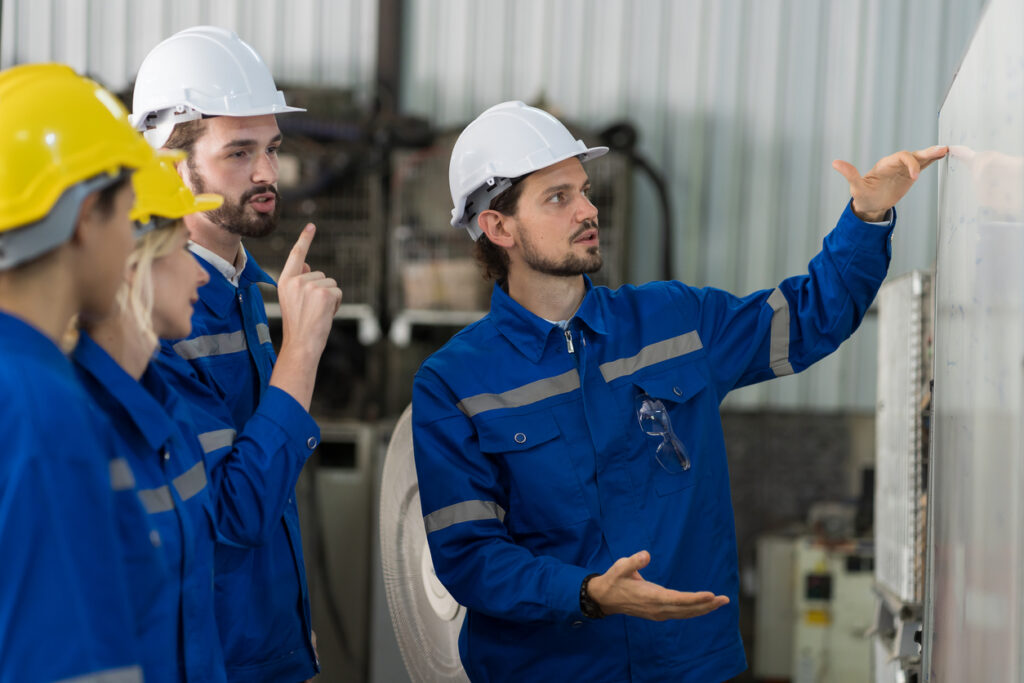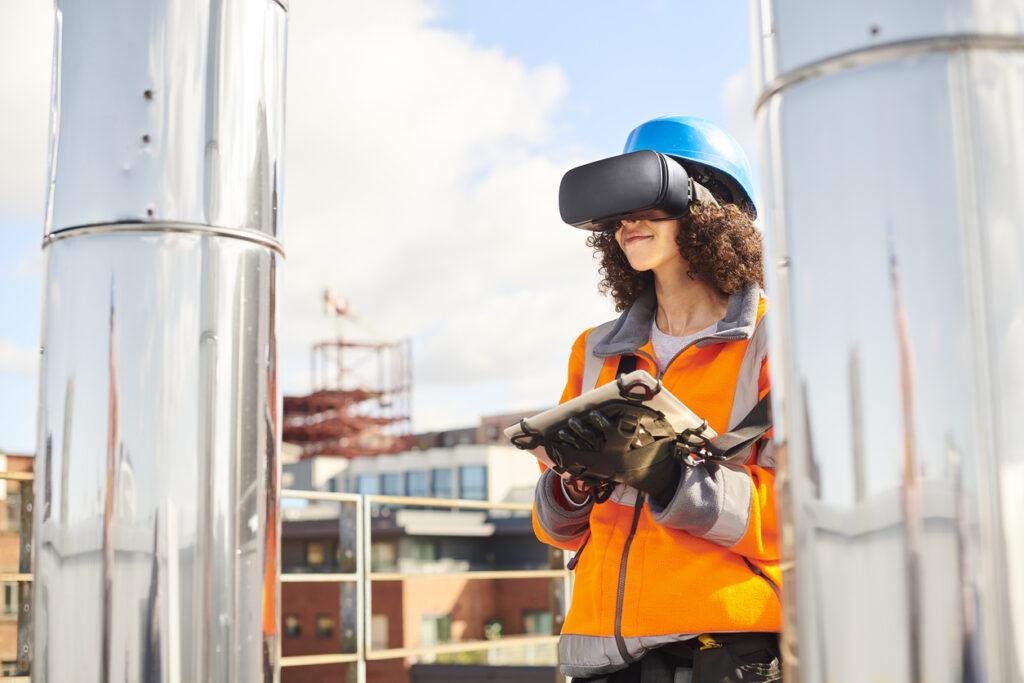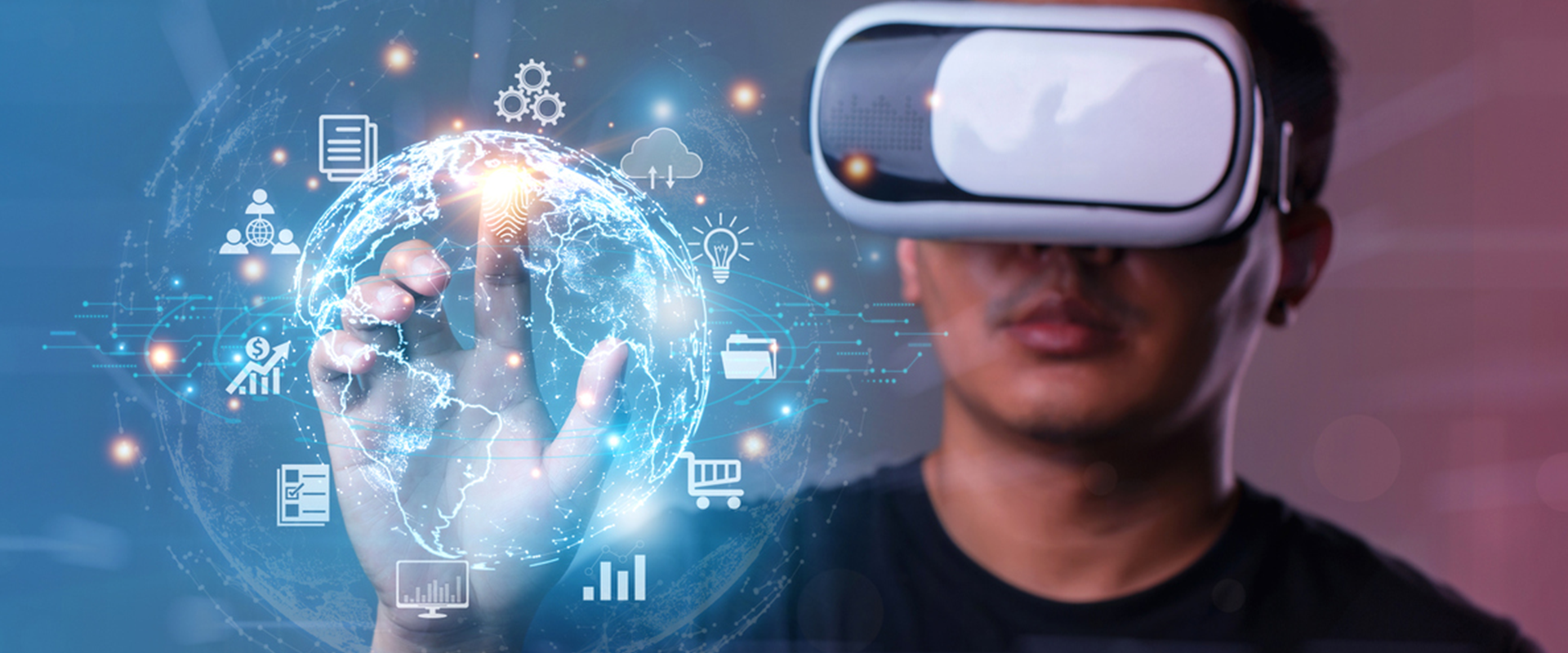Imagine a scenario where trainees can inspect dangerous areas without entering them, disassemble complicated apparatus without any physical risk, or handle emergencies with complete confidence — all through the power of augmented reality (AR) and virtual reality (VR). The combination of these cutting-edge technologies is not only transforming the future, but it is also revolutionising how we prepare for and safeguard those who are in charge of maintaining machinery and assuring safety in high-risk industries.
Many industries are investing in new technologies and proof of this is the growing adoption of augmented and virtual solutions in maintenance and safety training. If you are curious and want to explore new ways of training your employees, this article is for you.
The growing popularity of AR and VR in maintenance and safety training
As early as 2020, AR and VR technologies, known together as extended reality (XR), were already being used in a number of industries. As everything moved to the online and remote mode during the COVID-19 pandemic, XR solutions became especially present in healthcare and education but also in construction and manufacturing. Global spending on AR and VR headsets, software and services has grown by 50% compared to 2019. It was a significant advantage in the pandemic and in fact, the only way to continue the training and education process.
Today, a few years later, the industry is still evolving and XR is being used in many different ways. By 2027, the augmented reality and virtual reality market for the retail sector alone is expected to reach $2,094.08 billion, rising at a 68.5% CAGR (compound annual growth rate) from 2020 to 2027, according to Data Bridge Market Research.
These immersive innovations provide a transformative learning environment that improves understanding, retention, and practical application. On top of that, XR technologies surpassed the limitations of conventional training techniques. Have a look below at the downsides of traditional training and how AR and VR can help in overcoming them.

Drawbacks of conventional training methods:
- Unengaged employees – conventional training often relies on static materials like textbooks or presentations, which can be less engaging for learners. VR and AR methods, on the other hand, can be fun activities which offer highly immersive experiences that engage learners by placing them in realistic, interactive environments.
- Lack of realism – it has long been known that the best way to learn is through practice, and traditional training methods cannot replicate that level of realism. Whereas VR and AR technologies enable the recreation of real-world scenarios, allowing trainees to practise in a safe, controlled, and true-to-life setting.
- Safety risk – another big challenge is that a lot of conventional training is done on-site, where safety risks are high. Training utilising augmented and virtual realities can drastically cut the dangers associated with hands-on instruction in hazardous or stressful circumstances.
- Limited accessibility – learners from afar or people who are physically disabled can be excluded from training, making it difficult to provide them with the same level of training. XR allows for remote training so distant learners can participate in the training remotely, which makes it simpler for learners who are geographically scattered or have any other reasons for being physically unable to attend.
- High costs – traditional training programmes can be expensive to create and implement, especially when travel and physical resources are needed. The solution is to use AR and VR technologies to save on costs and time as with these technologies there is no need to invest in long-term training expenditures including travel and material manufacture.
Top 5 ways of implementing AR and VR in maintenance and safety training
Thanks to VR and AR technologies employers can create a virtual world where their employees can practise handling real-world challenges. These techniques are redefining training procedures and creating a new way of learning. Discover how to push boundaries of what’s achievable in the pursuit of safer, more efficient maintenance practices.
Interactive simulations

With extended reality, you can make interactive, realistic simulations of maintenance processes and dangerous circumstances. Using VR headsets, learners may become fully immersed in these situations and practise handling crises or carrying out maintenance duties without any danger to themselves.
Interactive simulations are popular in many industries, like construction, healthcare, transport, manufacturing or aviation. According to the World Aviation Festival, airlines like Qatar Airways, Air France, Japan Airlines, and Lufthansa have implemented VR training programmes. With the help of this technology, crew members may practise responding to emergencies in a secure setting.
AR-guided order picking
The major goal of adopting VR and AR is to reduce mistakes and delays during the submission and handling orders, management of items, classification of products, and ultimately delivery of things to the client. To assist warehouse staff with order picking, employ augmented reality headsets or VR glasses. To cut down on errors and boost efficiency, AR and VR overlays can show where items are located, how many there are, and the best routes.
As per Harvard Business Review, big brands like DHL and Intel have embraced AR in their warehouses, resulting in significant benefits. DHL achieved a 25% boost in productivity and is expanding AR-guided picking worldwide. Meanwhile, Intel reduced picking time by 29%, virtually eliminating errors.
Remote procedural training
Develop AR and VR modules that guide trainees through step-by-step maintenance procedures. These modules can offer real-time feedback, ensuring that trainees learn and perform tasks correctly. For example, it is used in surgical training for new doctors. Institutions like Stanford Medical School and the University of California, use a new software system that creates a three-dimensional model using data from MRIs, CT scans, and angiograms that doctors and patients can view and interact with, much like a virtual reality game.
3M, one of Distrelec’s suppliers, offers VR applications for interactive health and safety training that support training effectiveness and efficiency. These apps help with creation of an engaging experience for workers to grab their attention and improve learning outcomes. Doing safety training in virtual reality is safer as it happens in a virtual environment. Find out more on 3M’s website.

Safety drills
Conduct virtual safety drills in VR environments where trainees can practise safety protocols and emergency responses. This allows for repeated, risk-free training to ensure that employees are well-prepared for critical situations. Basically, employees who participate in virtual reality safety training gain knowledge of and comfort using PPE preparation and rules. VR enables people to practise awareness and use the information in a secure virtual setting to lower incidents.
Remote visibility
Use AR glasses or devices to enable remote experts to provide real-time guidance to field workers. Field technicians can wear AR glasses, and experts can see what they see, offering assistance and guidance without the need for physical presence.
Additionally, AR provides trainees with 3D overlays and interactive elements on physical equipment. This aids in equipment familiarisation, allowing trainees to learn about complex machinery, parts, and controls in a safe, controlled, and interactive virtual environment. These technologies, whether through remote assistance or familiarisation with tools, enable workers to identify defects, anomalies, and ensure compliance with quality standards through digital overlays and sensors.
The future of extended reality
Currently, a lot of companies are investing in and developing the potential of virtual and augmented realities and one well-known brand is Apple. Apple designed a ground-breaking spatial computer, Apple Vision Pro, which seamlessly melds digital content with the real world. It combines the capabilities of AR and VR, creating a technological marvel that is well-known all over the world.
What innovations we can expect in the future is not yet known but observing the progression of XR technology, it can be assumed that the future will be a lot more advanced and immersive.











